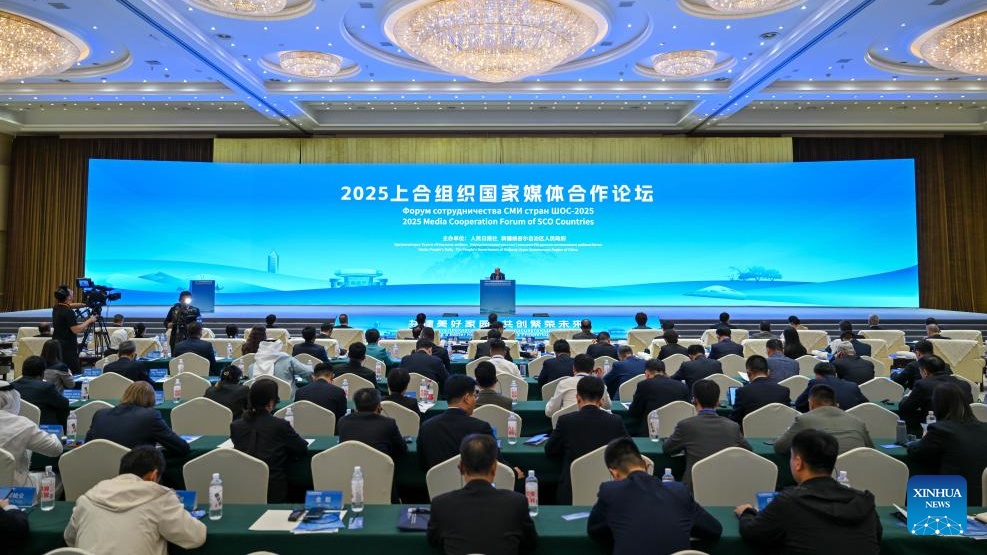To build the Xinjiang Uygur autonomous region into an international civil aviation hub for Eurasia and promote the high-quality development of its civil aviation sector, the Civil Aviation Administration of China and the regional government have released a comprehensive guideline.
The guideline focuses on three areas: building Urumqi, the capital of the region, into an international hub for the civil aviation system; establishing a comprehensive air route network linking big and medium-sized cities inside and outside Xinjiang; and improving airport infrastructure in the region.
Urumqi airport will serve as the core, and airports in Kashgar, Korla, Yining, Turpan, Hotan, Karamay and Aral will act as auxiliary hubs. They will connect with regional branch airports and general aviation airports, forming a multilevel transportation hub covering the entire region and integrating with other transportation modes, according to Zhang Qing, development planning department director of the CAAC.
"The network will establish international air routes from Urumqi to Central Asia and Europe, and domestic routes connecting Xinjiang with other parts of China," she said. "This will enhance Xinjiang's role as a gateway to Central Asia and a bridge between Asia and Europe."
The first phase of the plan, lasting until 2027, focuses on infrastructure development and improving air transportation services. The second phase, from 2027 to 2035, will focus on improving overall performance.
"By 2035, the Xinjiang civil aviation industry will have achieved high-quality development, with significant improvements in safety, service quality, operational efficiency and green development," Zhang said. "Urumqi airport will be a strong competitor in the Eurasian market, and regional airports will play a more prominent role, ensuring air services cover the entire region."
Zou Yiwei, head of the State-owned Assets Supervision and Administration Commission in Xinjiang, said, "Realizing this goal will greatly promote economic and trade exchanges and cultural interactions between the Xinjiang Uygur autonomous region and neighboring countries and regions."
The guideline also includes measures to create an air service networks linking Xinjiang to urban clusters including Beijing-Tianjin-Hebei, the Yangtze River Delta, the Guangdong-Hong Kong-Macao Greater Bay Area, and the Chengdu-Chongqing region, Zou said.
Implementation of the guideline is expected to propel Xinjiang's aviation industry into a new era of growth, boosting regional trade and tourism, and contributing to its economic development, he added.
As trade and tourism between China and Eurasia continue to flourish, a surge in demand for air travel is expected, said Pan Yixin, executive vice-president of the China Air Transport Association.
"We are seeing a tremendous demand for direct flights and increased frequency of service between China and Central Asia and the Middle East," Pan said.
That was evident during a recent visit, where aviation authorities, airlines and airports in countries such as Uzbekistan and Kazakhstan, and in Dubai in the United Arab Emirates, expressed a strong desire to expand their connections with China, he said.
China Southern Airlines, one of China's major airline companies, is eyeing expansion at the Urumqi hub, according to the company's general manager, Han Wensheng.
The company plans to increase the number of aircraft deployed at Urumqi to 90 by the end of next year, representing a 30 percent increase from 2019.
"Leveraging the advantages of the cargo compartments of China Southern Airlines' passenger aircraft and its extensive international and domestic route network, we will build urban cargo stations, vigorously develop transit routes, and allow Xinjiang goods to go out and bring advanced industries to the region," Han said. "We will also enhance the cargo gathering and distribution capacity of the Urumqi hub."
Qi Qi, deputy head of the Management College of the Guangzhou Civil Aviation College, said Xinjiang's civil aviation industry is experiencing rapid growth, with Urumqi setting a record for single-runway takeoffs and landings in China.
"Urumqi has a unique geographic advantage, serving as a bridgehead for China's westward opening-up policy and a core city in the Silk Road Economic Belt," Qi said, adding that within a 4-hour flight radius, Urumqi covers the core cities of five Central Asian countries, reaching an area with a population of over 1.4 billion and a GDP of over $10 trillion.
However, the limited resources at Urumqi Airport, such as the single runway, still pose a challenge to its development as an international hub.
"Although the airport is planning a second runway and new terminal, it takes some time," he said.
luowangshu@chinadaily.com.cn


.png)

.png)

.png)























